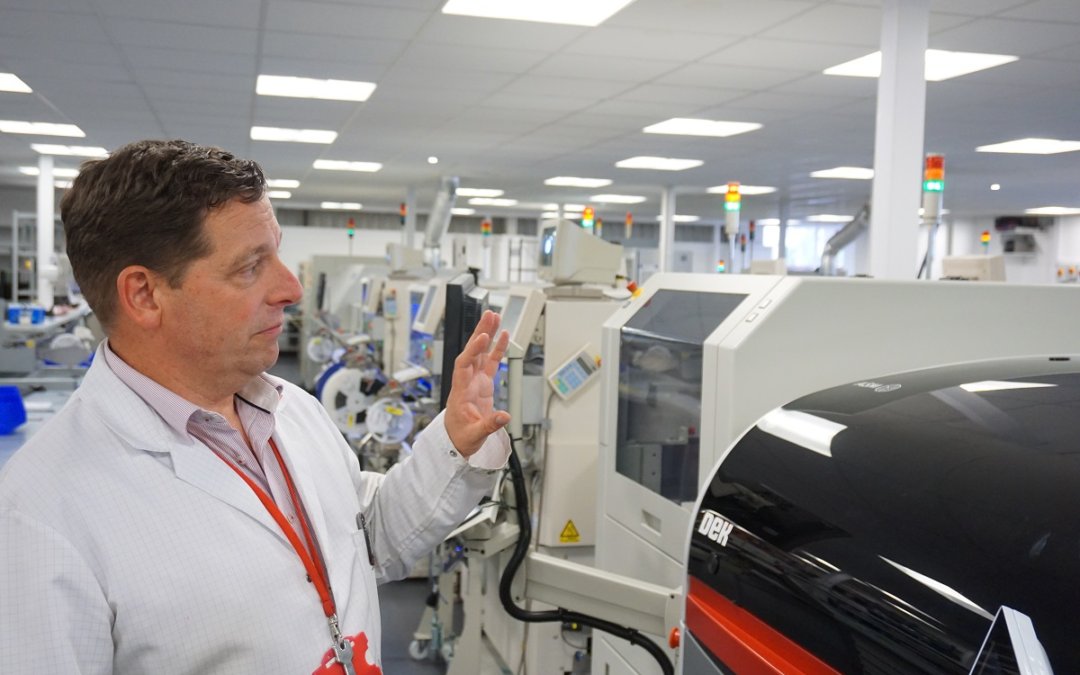Risk management, quality and accuracy are essential in the manufacturing of medical electronic devices. Increasingly stringent regulatory requirements apply to every step of a product’s life cycle, including the design, engineering, service, delivery and returns process.
As new ‘invasive’ devices appear on the market (those that are applied to, or used in, the body) it looks like the level of regulatory scrutiny is set to be turned up yet another notch.
Medical OEMs demand that their EMS partners can demonstrate a comprehensive quality management system. Checks, best practices, monitoring and recording must be embedded into every stage.
Traceability is particularly important, and not just to meet regulatory demands. Medical products must be built exactly to specification – using verified components and with fully defined finishes, battery types, temperature ranges, and so on.
It’s critical that the provenance of each component can be traced and that detailed records are kept of each stage of the manufacturing process. Lot traceability helps contain any issues that arise and ensures that problems are not spread.
ISO 13485 (2016)

The international agreed standard that sets out the specific requirements for a quality management system that meets the rigorous needs of the medical devices industry is ISO 13485 (Medical devices – Quality management systems – Requirements for regulatory purposes).
The latest version of this was published in March 2016. Unsurprisingly it places a greater emphasis on risk management and risk-based decision making, as well as increasing the regulatory requirements for managing the supply chain.
When Chemigraphic successfully transitioned to the new 2016 version, our NPI and sales director, John Johnston, commented:
“It’s a huge privilege for us to be involved with some of the most pioneering medical projects in the world, something we take great pride in.
In order for us to deliver the very best for our customers, it’s vital that we take quality and processes extremely seriously.
Standards such as the ISO 13485:2016 are an excellent mark of our commitment to quality, allowing us to credibly demonstrate our excellence in medical electronics manufacturing.”
Let’s take a look at how Chemigraphic is placing quality, accuracy and safety at the heart of its electronic manufacturing services for medical device OEMs.
5 critical questions medical device OEMs need to ask their EMS partner
We adopt a quality mindset.
The focus on quality permeates our culture, every level of our organisation. Every aspect of our manufacturing process is analysed continuously – and risk management informs our design, engineering, testing and supply chain decisions.
Here are 5 questions that you can ask any potential EMS partner to assess their suitability for your medical device production.
- Do you take a proactive approach toward quality management systems? Specifically, are you positioned to respond to likely regulatory or market changes?
New developments in Industry 4.0 practices, including the Internet of Things (IoT) and machine-to-machine (M2M) communication, are helping us to deliver a more seamless and ‘mistake proof’ production process.
What’s more, should a manufacturing issue come to light later, our technology can quickly and effectively isolate the products that must be recalled.
By integrating data more comprehensively into our quality management systems, we have greatly enhanced our accuracy and responsiveness.
- How well can you support my risk management requirements?
Real-time notification and preventive or corrective action workflows enable us to efficiently communicate issues, streamline collaborative activities and resolve problems quickly and effectively.
At key test stations we use camera-based system verification, X-rays or automatic optical inspection (AOI) to double-check placement of materials at levels the human eye cannot identify. This allows us to compare derailed visual information against known valid characteristics of a medical device to verify the product’s quality.
- Are your quality control measures apparent at every stage of manufacture – and, just as importantly, are they comprehensively recorded and responded to?
We embed procedures, steps, checks and balances into everything we do. Our continual closed loop feedback system ensures a highly reliable, high quality and repeatable product.
- What does an analysis of your pass yields and data matrices reveal?
Our detailed data matrices document quality measures, progress levels and information about the various stages of the surface-mount technology assembly process, including testing.
They reveal, at a glance, exactly what we monitor and measure to determine if quality is being met.
- Do you have test strategies suitable for the rigorous requirements of medical electronics sub-assembly?
The capabilities to conduct the most suitable test is critical in ensuring quality for medical devices. The testing criteria that we can deploy includes full functional, flying probe and in-circuit testing (ICT).
Find out more about our quality-centred approach to medical device manufacturing
To find out about any of the products we have helped OEMs launch into the medical market – or to discover how we place quality at the centre of all we do – call our team on +44 (0) 1293 543517.
